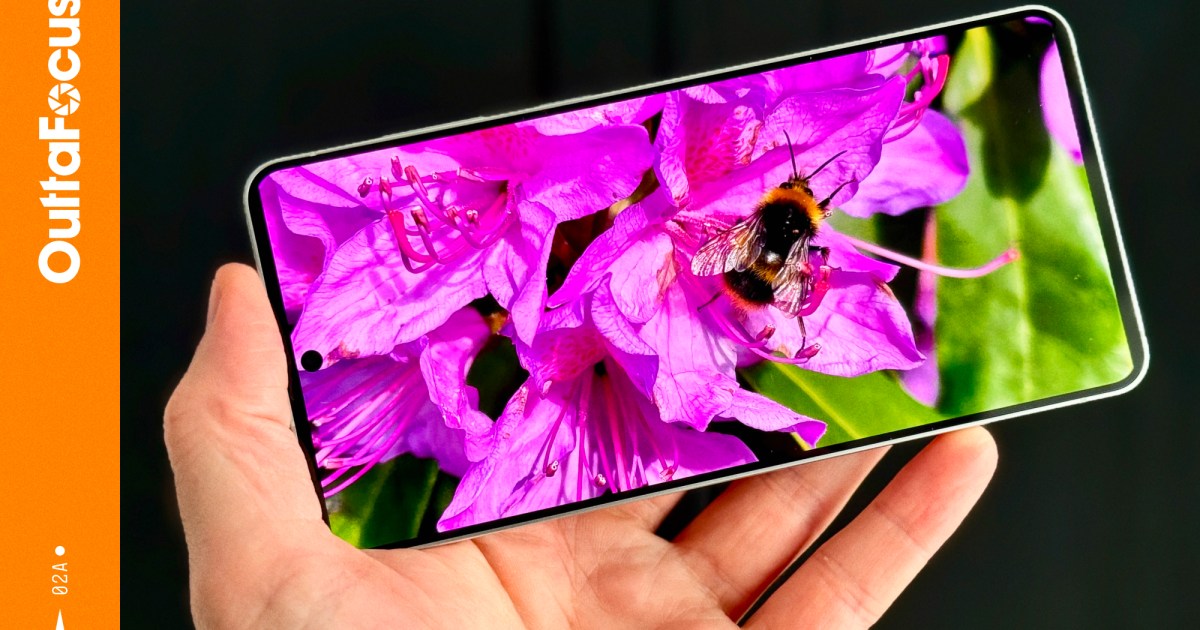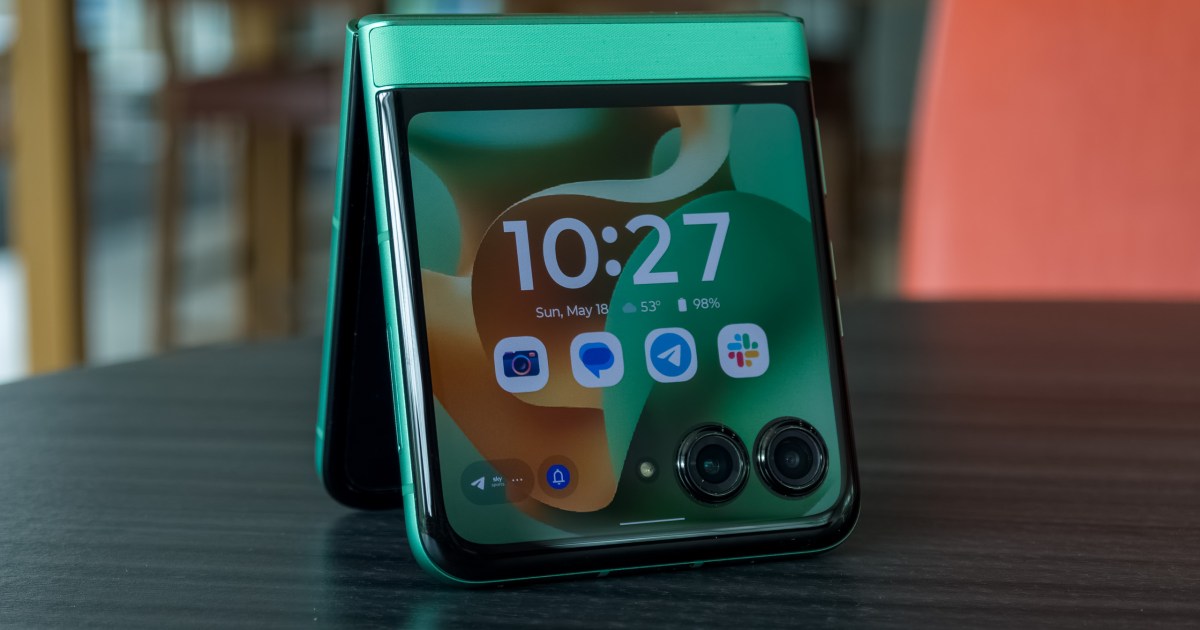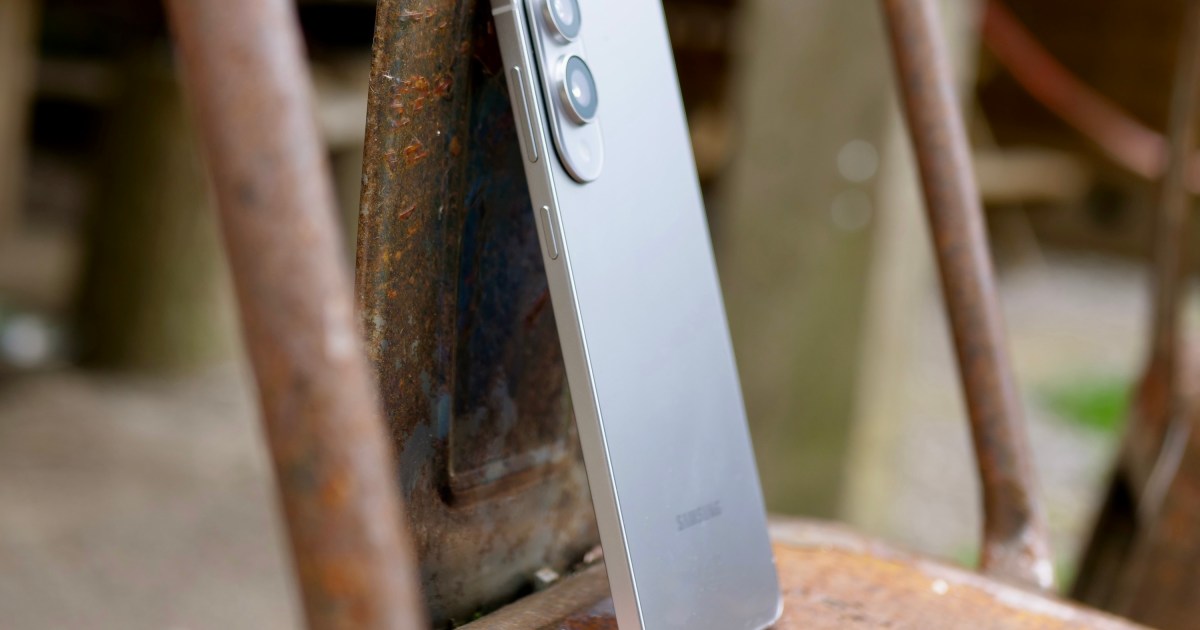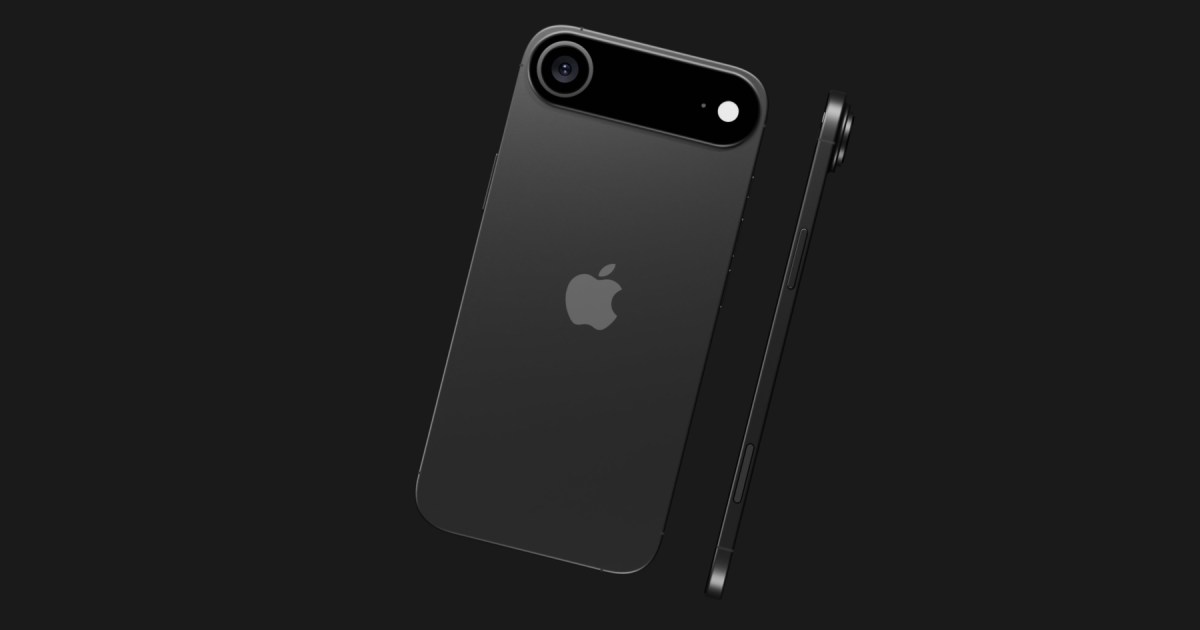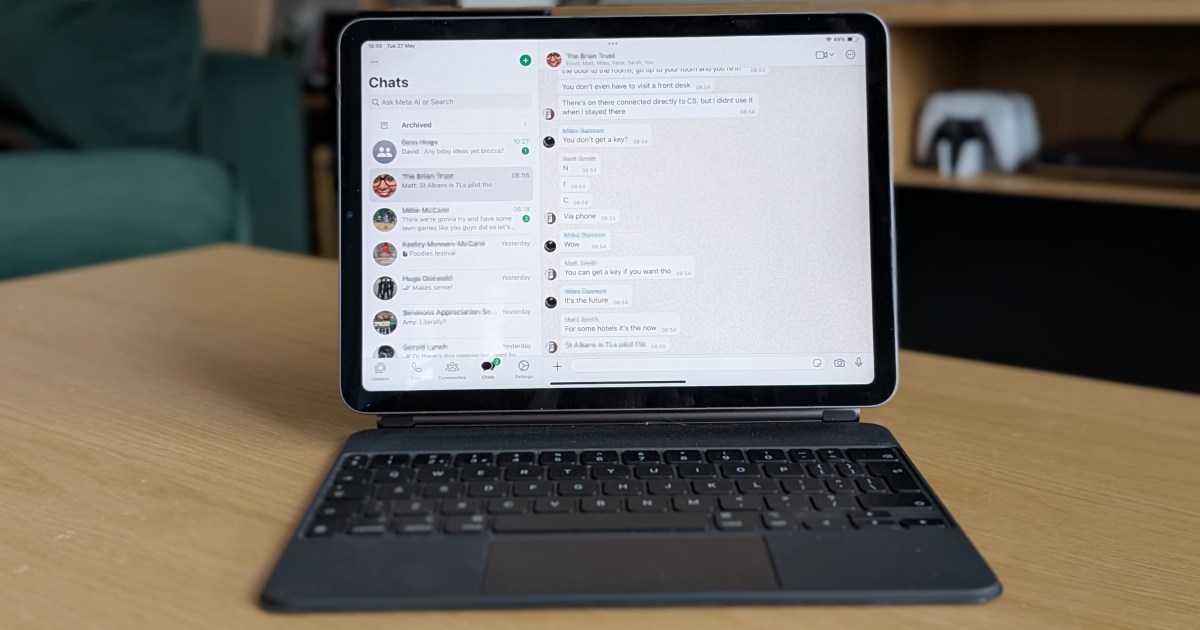The Samsung Galaxy S25 Edge’s camera configuration might give you pause, and understandably so if you’re considering it for your next smartphone. Its spec sheet boasts the impressive 200-megapixel main camera, akin to the Galaxy S25 Ultra, yet it notably omits a dedicated telephoto lens, a feature found on the Galaxy S25 Plus. This places the S25 Edge in a somewhat perplexing middle ground. My initial concern was that this lack of a true telephoto lens would compromise the S25 Edge’s photographic versatility. Consequently, I’ve spent considerable time testing its zoom capabilities to determine if it’s a practical solution or a significant drawback for what is otherwise one of the most sleek and slim smartphones available today.
Understanding “Optical Quality” Zoom
Samsung has equipped the Galaxy S25 Edge with a 200MP main camera and a 12MP wide-angle camera but no dedicated telephoto. Instead, Samsung promotes a 2x “optical quality” zoom, achieved by leveraging the power of the 200MP main sensor. This technology involves capturing a full-resolution image and then cropping it directly on the sensor. This method aims to avoid the pixel enhancement and digital cropping techniques often employed for higher zoom levels like 4x or 10x within the camera app, theoretically resulting in a cleaner, more natural-looking zoomed photo.
 Sleek Samsung Galaxy S25 Edge smartphone held in hand, showcasing its design.
Sleek Samsung Galaxy S25 Edge smartphone held in hand, showcasing its design.
Despite Samsung’s sophisticated technical explanation, the term “optical quality” zoom often sounds like a compromise to photography enthusiasts. Many will still prefer the dedicated optical telephoto cameras found on the Galaxy S25 Plus or Galaxy S25 Ultra. Considering the S25 Edge’s premium price point (around $1,100), some might argue it should have included one. However, physical space is likely the primary constraint. Samsung successfully reduced the 200MP camera module’s size by 18% to fit it into the S25 Edge’s slim chassis—a significant engineering feat suggesting minimal internal space. But for camera purists, sensor size and engineering prowess matter less when faced with “optical quality” claims. The real question is: do the photos validate this approach?
First Impressions: S25 Edge Zoom in Action
Over the past week, I’ve been actively shooting with the Galaxy S25 Edge, paying close attention to the 2x optical quality zoom shortcut in the camera app. While it may not offer the same reach as a 3x telephoto, the 2x zoom still provides valuable framing options, introduces a pleasing depth of field, and helps isolate specific details that might be lost in a standard 1x shot.
During a day spent with the Hyundai Kona Electric, I used the S25 Edge’s 2x zoom to capture some of the car’s distinctive details. The primary 2x shot of the vehicle is excellent, exhibiting accurate white balance and just enough depth of field to make the subject stand out. Importantly, there’s minimal noise, even when cropping the image further. However, some slight haloing is visible upon close inspection in certain shots.
 Hyundai Kona Electric rear quarter detail captured with Galaxy S25 Edge 2x zoom.
Hyundai Kona Electric rear quarter detail captured with Galaxy S25 Edge 2x zoom.
This haloing is the main area of concern with the 2x zoom. While it appears in some photos, it’s not consistently present and seems dependent on lighting conditions. It’s also plausible that future software updates could mitigate this. A shot of the car’s dashboard, framed by the sweeping door line, reveals an impressive amount of detail. Text on buttons and the screen remains sharp and legible, with little noise evident in darker areas like the footwell.
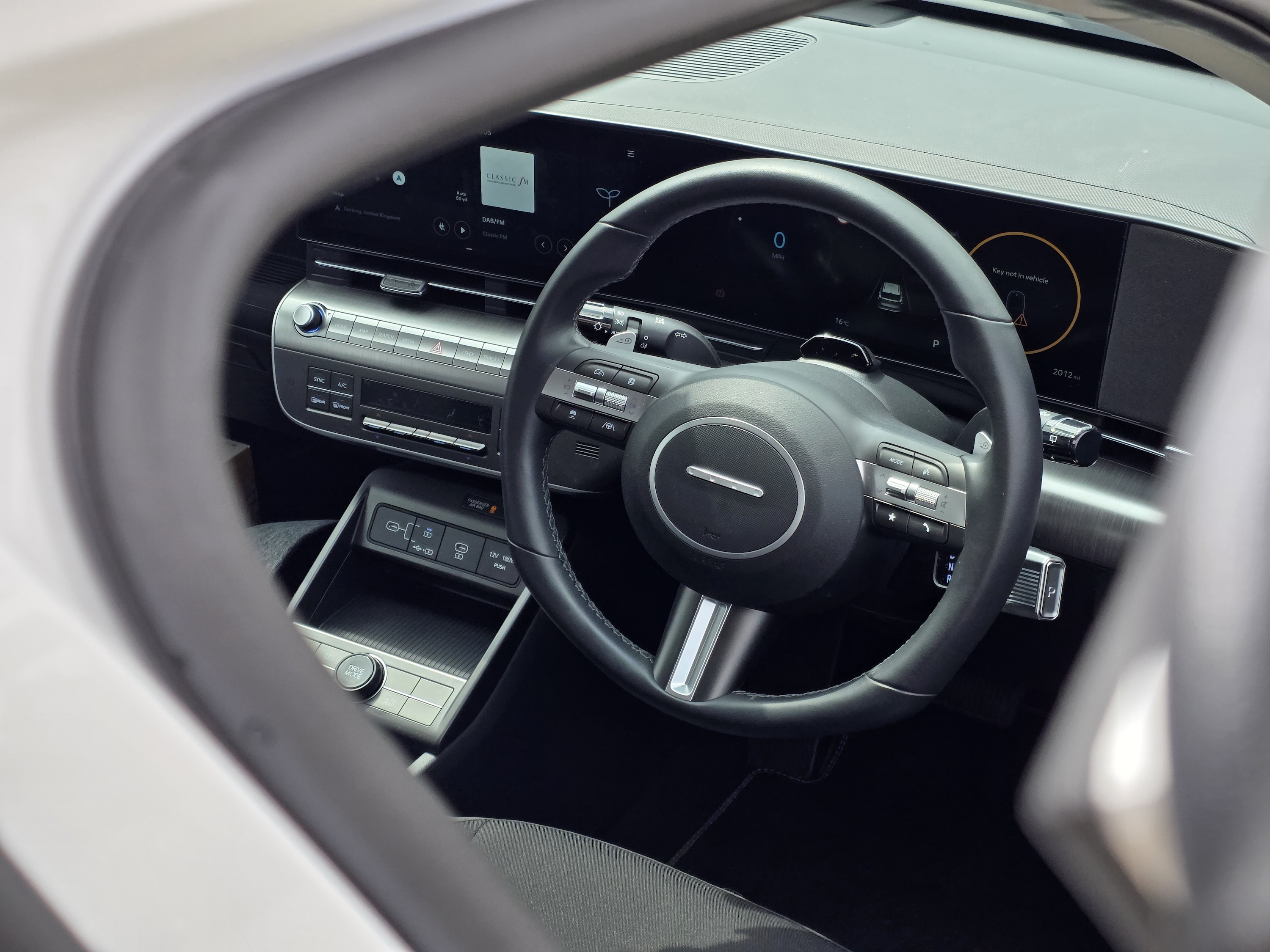 Detailed dashboard shot of Hyundai Kona Electric taken with Galaxy S25 Edge 2x zoom, showcasing sharp text on buttons.
Detailed dashboard shot of Hyundai Kona Electric taken with Galaxy S25 Edge 2x zoom, showcasing sharp text on buttons.
Another close-up, this time of the front light assembly and wing, once again demonstrates the camera’s excellent white balance and detail retrieval on the tire and within the light unit, with no noticeable haloing in this instance.
 Galaxy S25 Edge 2x zoom close-up of Hyundai Kona Electric front light and wing, demonstrating excellent white balance.
Galaxy S25 Edge 2x zoom close-up of Hyundai Kona Electric front light and wing, demonstrating excellent white balance.
Versatility with Close-Ups and Beyond 2x
With spring’s arrival, bees are busy among the blossoms, providing a perfect test for the Galaxy S25 Edge’s camera in focusing on small, relatively close subjects. I typically prefer using telephoto lenses for such shots, but I’ve been pleasantly surprised by the S25 Edge’s performance here.
I captured numerous photos, and one of the better results is shown below. The sheer number of shots was more due to the bees’ reluctance to stay still than any failing of the camera. The focus on the flower is sharp, and the camera has effectively captured the bee in mid-flight. While some motion blur is present, this is expected and doesn’t detract from the overall quality of the image. Considering this was achieved without an optical telephoto, handheld, and in auto mode, the result is quite respectable.
 Sharp focus on a flower with a bee in flight, captured by Galaxy S25 Edge camera using auto mode.
Sharp focus on a flower with a bee in flight, captured by Galaxy S25 Edge camera using auto mode.
But what about performance beyond the advertised “optical quality” 2x mode? This is where I further underestimated the camera. The 3x zoom, despite not being promoted by Samsung as optical quality, is remarkably usable. The second bee photo was taken at 3x (digital zoom), and the quality is excellent. It retains a high level of detail, strong colors, and a pleasing depth of field. The 3x mode significantly exceeded my expectations, perhaps even more so than the 2x mode. You can explore more about how smartphone camera sensors achieve such results in our detailed guides.
 Vibrant 3x digital zoom photo of a bee on a flower taken with Galaxy S25 Edge, showing impressive detail.
Vibrant 3x digital zoom photo of a bee on a flower taken with Galaxy S25 Edge, showing impressive detail.
The S25 Edge Camera: Exceeding Initial Doubts
This assessment isn’t a comprehensive review of the Galaxy S25 Edge’s entire camera system. However, since the exclusion of a true telephoto lens generated some discussion—even if it wasn’t entirely unexpected given the phone’s svelte design—it was the most likely feature to be a purchasing barrier.
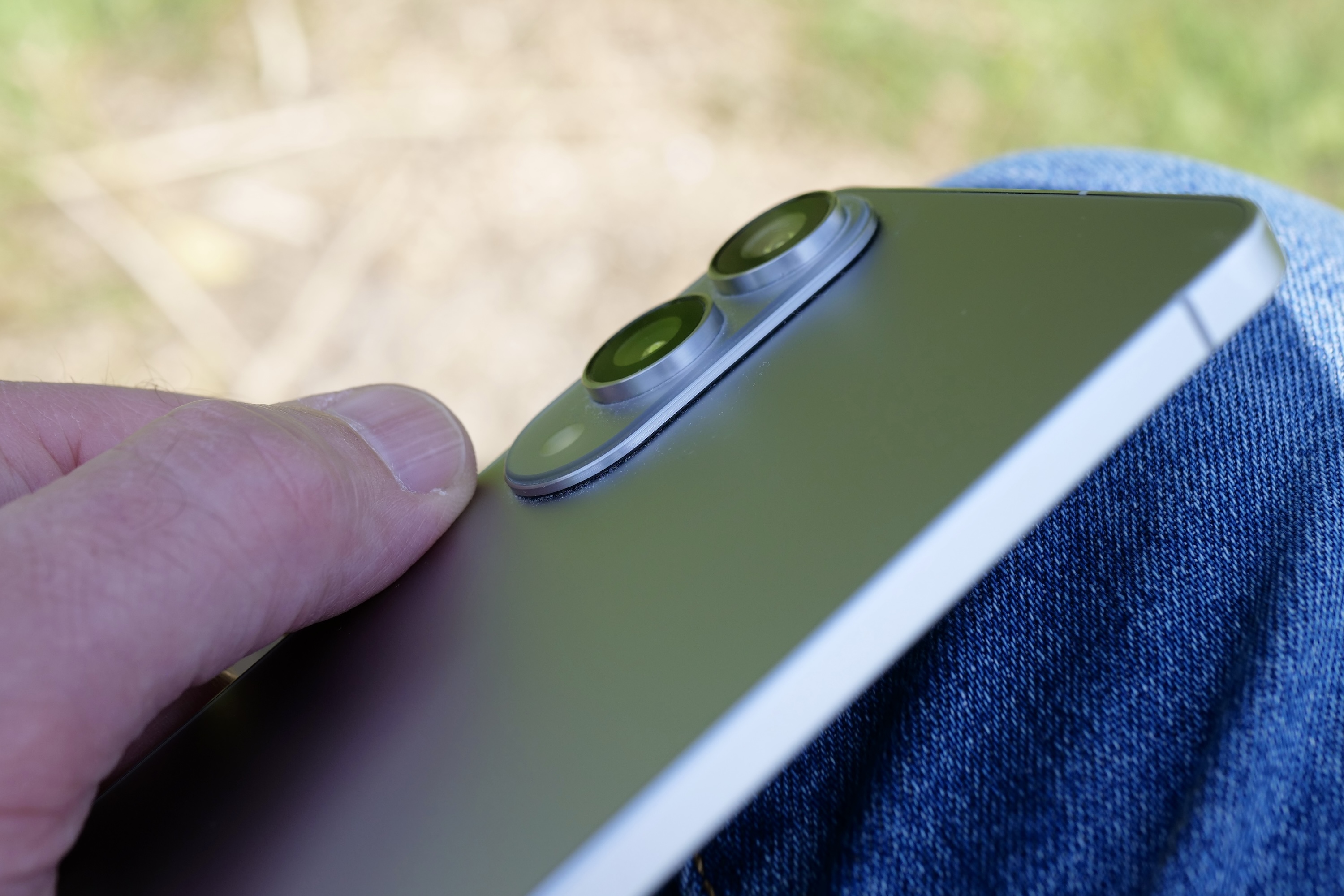 Slim profile of the Samsung Galaxy S25 Edge showcasing its thin design and camera bump.
Slim profile of the Samsung Galaxy S25 Edge showcasing its thin design and camera bump.
I admit I underestimated the Galaxy S25 Edge’s zoom capabilities. In doing so, I also underestimated how effective Samsung’s “optical quality” zoom technology has become. I should have had more confidence, especially remembering similar initial concerns about the Galaxy S24 Ultra’s 10x hybrid zoom after its transition from the Galaxy S23 Ultra’s 10x optical telephoto, which also proved to be very capable.
The zoom performance of the S25 Edge is certainly not a reason to be put off by this phone. Nor should you feel shortchanged if you choose it over the Galaxy S25 Plus because of telephoto concerns. It’s a highly capable system, even at 3x digital zoom, and serves as a brilliant illustration of how technology can solve physical constraints, like fitting another camera module into an ultra-thin body. My experience with the Galaxy S25 Edge has been thoroughly enjoyable so far, particularly its remarkable portability and the superb ergonomics of its 5.8mm thick chassis.
If you’re drawn to the Galaxy S25 Edge but have reservations about its dual-camera setup on the rear, you can confidently dismiss that concern. The camera delivers impressive results, proving that intelligent sensor utilization can indeed offer a compelling alternative to a dedicated telephoto lens for many everyday photographic situations. For those interested in the broader S25 lineup, consider checking out our comparisons and reviews of other Galaxy S25 models.



